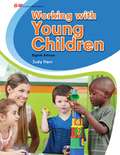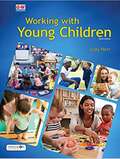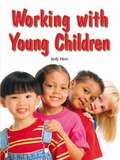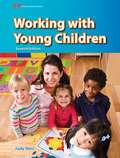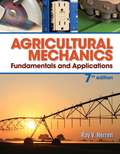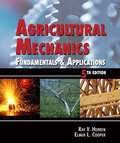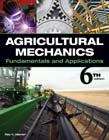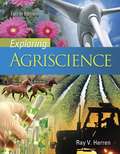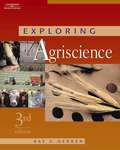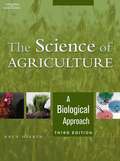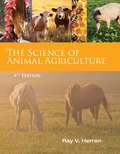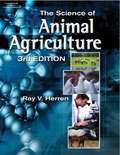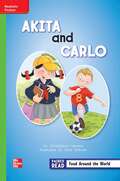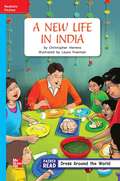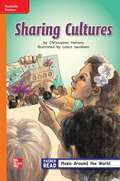- Table View
- List View
More NIMAC books are available at www.nimac.us. If you find your title in the NIMAC and not in Bookshare then please contact us to request it.
Enforcing Rules
by Vickey Herold Tara Funk6 copies of Book with Teacher's Guide and Comprehension Question Card
My Pet Lizard (Fountas & Pinnell Classroom, Guided Reading Kindergarten)
by Henry Heron Robert ReynoldsNIMAC-sourced textbook
Working with Young Children
by Judy HerrWorking with Young Children introduces you to the field of early childhood education. The text begins by helping readers better understand young children and then progresses into developing guidance skills. Child development principles are applied to child care settings. You will also learn how to handle specific concerns related to infants, toddlers, school-age children, and children with special needs. All information needed to successfully earn the Child Development Associate (CDA) Credential™ is included. Readers prepare for the workplace by learning about licensing rules and regulations, different career paths, and safety considerations. Core values and principles from the NAEYC's Code of Ethical Conduct and Statement of Commitment are highlighted in their own appendix.
Working with Young Children
by Judy HerrWorking with Young Children introduces students to the fast-growing field of early childhood education. Students will develop skills for guiding children effectively while keeping them healthy and safe. Working with Young Children applies child development principles to child care settings. On-site photos enhance the inviting, colorful format. This text provides current health, safety, and nutrition information plus additional coverage of technology, cultural diversity, family stressors, and child care careers. · New sections address licensing rules and regulations in addition to historical influences on early child care and education. · New chapter-opening activities include Key Concepts, Graphic Organizers, and Reading Advantage pre-reading activities. · New features appearing throughout the chapters include Safety First, Focus on Health, Learn More About..., and Workplace Connections. · Expanded chapter reviews provide more Cross-Curricular Links and new Thinking Critically, Using Technology, and Portfolio Project activities. · Appendix now includes NAEYC's Core Values.
Agricultural Mechanics: Fundamentals and Applications
by Ray V. HerrenThis trusted text provides a thorough introduction to agricultural mechanics, covering fundamental mechanical and engineering theory, common tools and materials, and a wide range of practical applications. Units explore essential topics such as career opportunities, shop orientation and procedures, woodworking and metal working, tool fitting, project planning, cutting and welding, paints and paint application, power mechanics, electrical wiring, plumbing, hydraulics, concrete and masonry, and agricultural structures. Safety is also emphasized strongly throughout the text, both within each chapter and in a dedicated unit. To engage today's students and make even complicated principles easier to apply, the text features abundant, full-color images, illustrations, charts, and data tables, as well as detailed drawings of over 50 complete project plans. More than 300 of these visuals have been added or updated for the Seventh Edition, which also boasts a suite of dynamic digital teaching resources, such as an online Coursemate with lecture materials, videos, interactive quizzes, and more. The new edition also includes updates to reflect the latest innovations in materials, machinery, and methods, providing a current and comprehensive guide to help students plan and execute agricultural projects effectively.
Agricultural Mechanics: Fundamentals & Applications
by Ray V. HerrenA text for students learning basic mechanical skills in high school and postsecondary programs in agriscience, production agriculture, agribusiness, ornamental horticulture, and agricultural mechanics. Treatment begins with information on careers, then provides instruction on basic mechanical skills and applications. Covers use of hand tools, power tools, and stationary power equipment with numerous materials, touching on processes of wood- and metalworking, electric and gas welding, electrical wiring, robotics, plumbing, and construction. Includes color photos of male and female students, and 54 project plans. This fourth edition is revised to reflect the latest developments in the field. Annotation c. Book News, Inc., Portland, OR (booknews.com)
Agricultural Mechanics: Fundamentals & Applications
by Ray V. HerrenA text for students learning basic mechanical skills in high school and postsecondary programs in agriscience, production agriculture, agribusiness, ornamental horticulture, and agricultural mechanics. Treatment begins with information on careers, then provides instruction on basic mechanical skills and applications. Covers use of hand tools, power tools, and stationary power equipment with numerous materials, touching on processes of wood- and metalworking, electric and gas welding, electrical wiring, robotics, plumbing, and construction. Includes color photos of male and female students, and 54 project plans. This fourth edition is revised to reflect the latest developments in the field. Annotation c. Book News, Inc. , Portland, OR (booknews. com)
Exploring Agriscience, 3rd Edition
by Ray V. HerrenExploring Agriscience, third edition, is a middle school text for students in Agricultural Education Programs who are enrolled in their first agriculture or agriscience class. Contents center on an exploration of agricultural industry as well as an explanation of how science concepts are used in agriculture. Topics covered include The history of agriculture; Soils, Plant structures; Entomology; Floriculture; Nursery and Landscaping; Fruit and Nuts; Row crops; Forestry; The Environment; Organic agriculture; Animal Science (including Dairy and Poultry); Aquaculture; Companion Animals; Ethics; Biotechnology; Careers; Agricultural Mechanics; Food Science; and Agricultural Education Programs. The text is illustrated with full color images that help clarify text material. Each chapter contains an insert that provides a description of an FFA Career Development Event (CDE) that relate directly to the chapter topic. Each chapter contains student learning activities that help students relate the text concepts to real life. In addition, each chapter ends with True/False, Multiple Choice and discussion questions to help evaluate student learning. An extensive teaching/learning package for the text is available. This package includes an instructor's guide, a lab model, and a classmaster CD-ROM that contains transparency masters, lesson plans, and a computerized test bank.
The Science of Agriculture: A Biological Approach
by Ray V. HerrenThe Science of Agriculture: A Biological Approach, third edition helps students bridge the gap between biological concepts and their applications. The text concentrates on the scientific principles, or the "why" behind the industry. Topics such as plant and animal systems, soils, cell functions, genetics, genetic engineering, plant and animal reproduction, entomology, the uses of biotechnology, and careers are covered throughout the text. The text also includes a thorough examination of the controversy and concerns over the use of genetic engineering, genetically modified organisms, cloning, and their perceived and potential dangers to humans and the environment. Each chapter begins with clearly-stated learning objectives, followed by key terminology. Chapters close with student learning activities that extend learning beyond the text material. End-of-chapter test questions in True/False; Short Answer/Discussion; and Multiple Choice formats help to evaluate students' grasp of the concepts presented in the text.
The Science of Animal Agriculture
by Ray V. HerrenTHE SCIENCE OF ANIMAL AGRICULTURE, 4th edition teaches science along with concepts associated with the industry of animal agriculture. The fourth edition features many updates, including the latest advancements in the field of animal science, such as cellular biology, and the latest updates on consumer concerns and new government regulations. A hallmark of THE SCIENCE OF ANIMAL AGRICULTURE, 4th edition is the presentation of scientific theory via application context. Topics such as nutrition, anatomy, genetics, entomology, pathology, and animal behavior are covered in depth. These complicated areas are presented in the context of how they are used in the animal industry, allowing the reader to make a distinct correlation. In addition, readers will benefit from this science-based, animal agriculture book that makes complicated biology principles easy to grasp and apply.
The Science of Animal Agriculture (3rd edition)
by Ray V. HerrenThe Science of Animal Agriculture, third edition is designed for use in courses aimed at teaching science along with concepts associated with the industry of animal agriculture. It responds to the current trends in education that promote connecting academic theory with real world applications. Research shows that students gain a better grasp of scientific theory if the theories are taught in an application context, and this text presents the application of biological science used in producing and caring for animals. Topics such as nutrition, anatomy, genetics, entomology, pathology, and animal behavior are covered in depth. These complicated areas are presented in the context of how they are used in the animal industry, allowing the student to make a distinct correlation. Students will benefit from this science-based, animal agriculture text that teaches complicated biology principles in the context of their application.
Sharing Cultures [Approaching Level, Grade 2]
by Christopher Herrera Laura JacobsenNIMAC-sourced textbook
Un día de pesca (¡Arriba la Lectura! Level B #21)
by Barbara Herzfeld Alan RubinNIMAC-sourced textbook <p><p> ¿Por qué esta niña necesita un sombrero, un chaleco y una lombriz?
Trabajar y divertirse: Poleas y engranajes (¡Arriba la Lectura!, Level J #78)
by Brad HerzogNIMAC-sourced textbook
Work and Play: Pulleys and Gears (Into Reading, Level E #78)
by Brad HerzogNIMAC-sourced textbook <P><P>Lexile Measure: 550L

